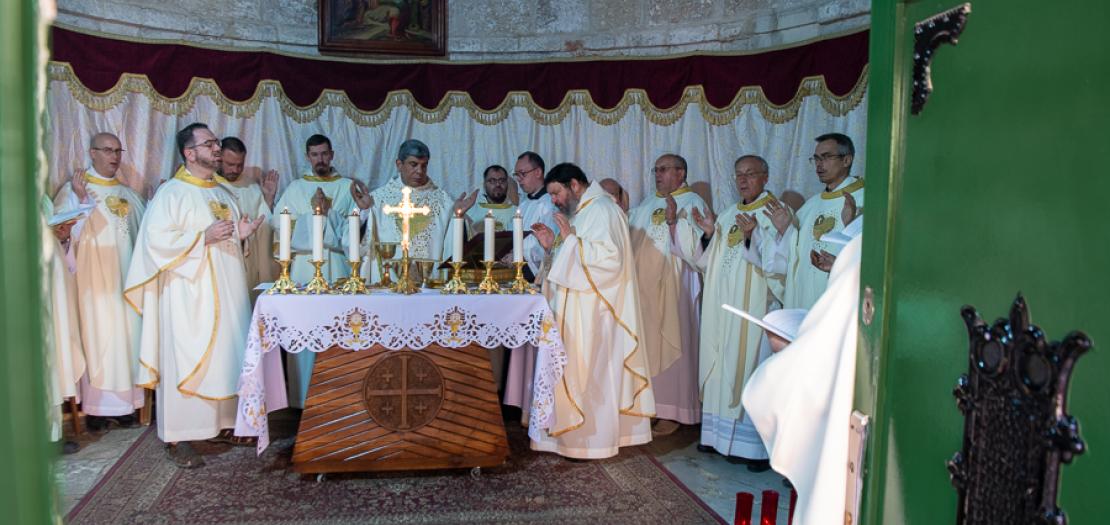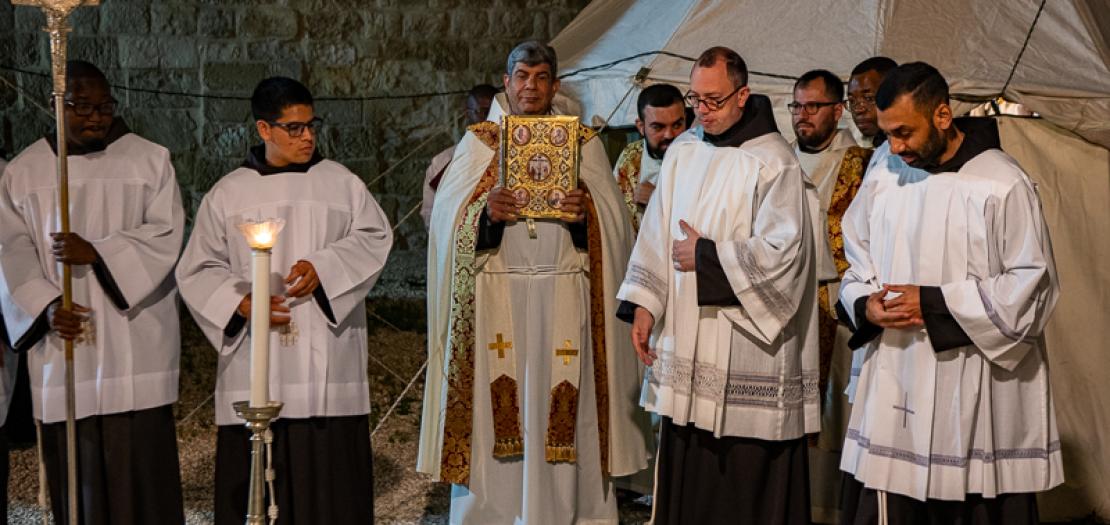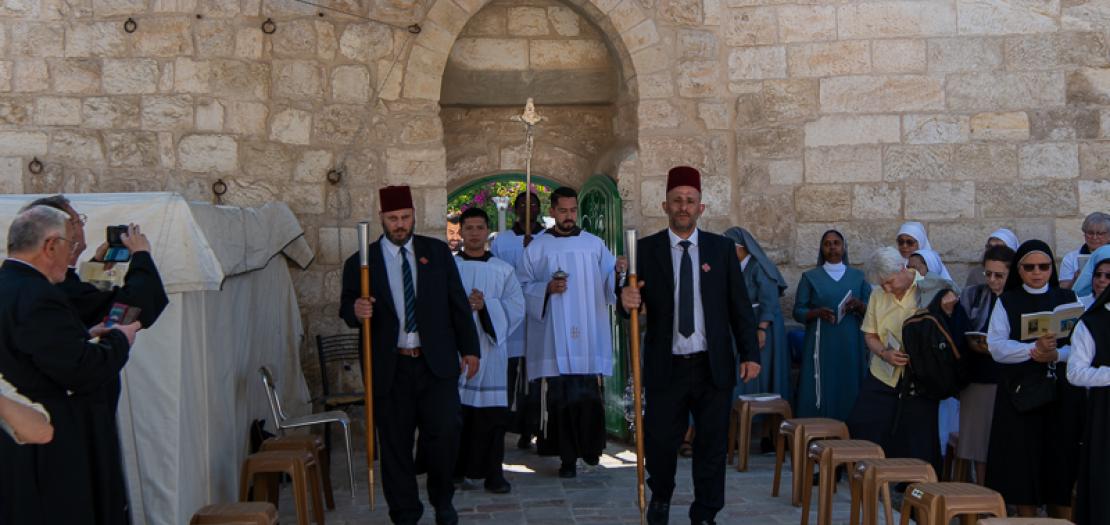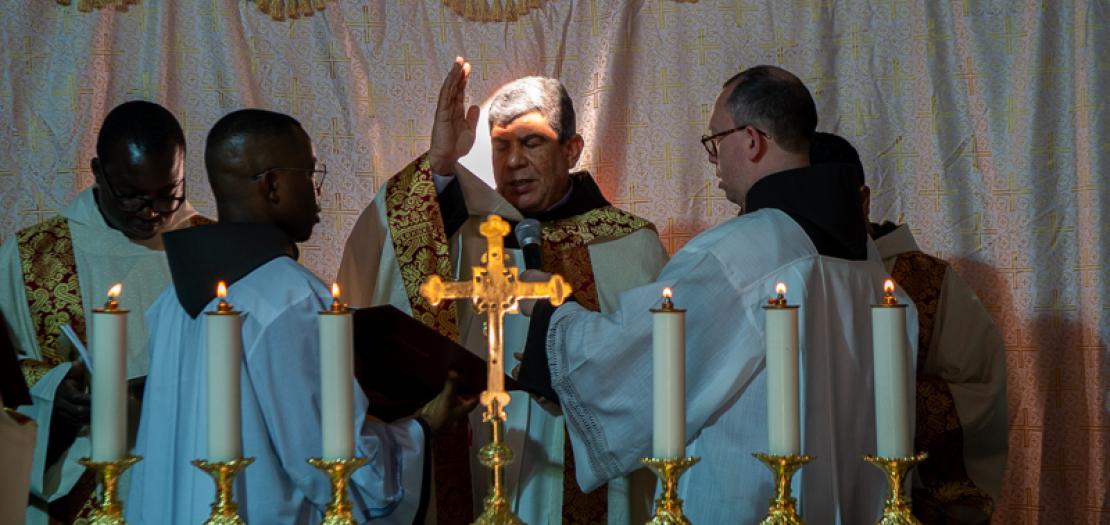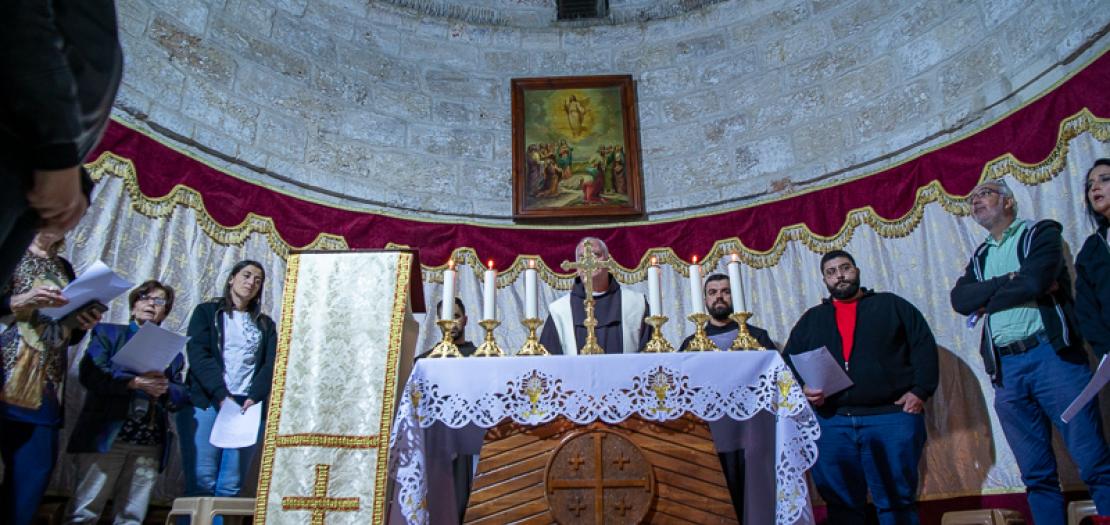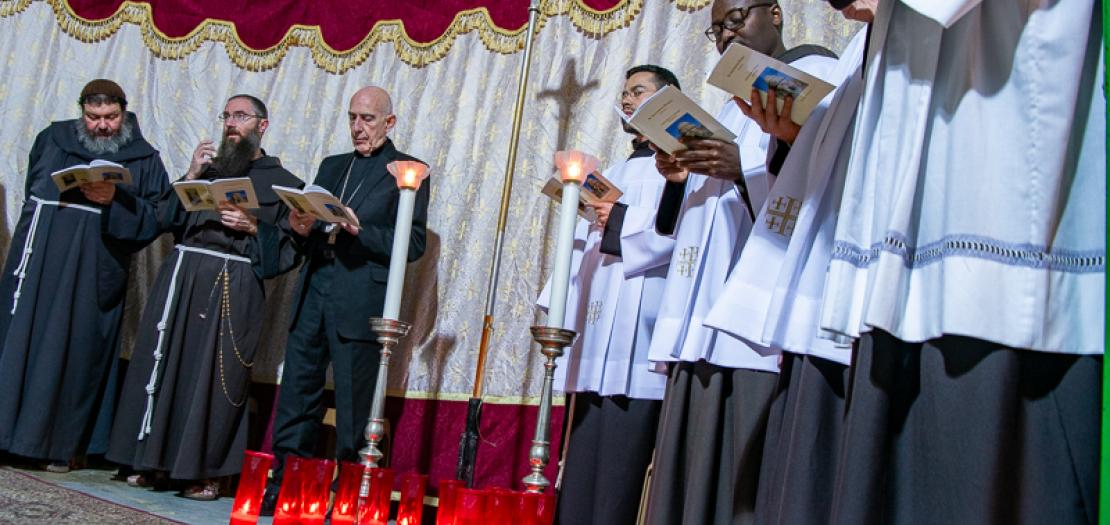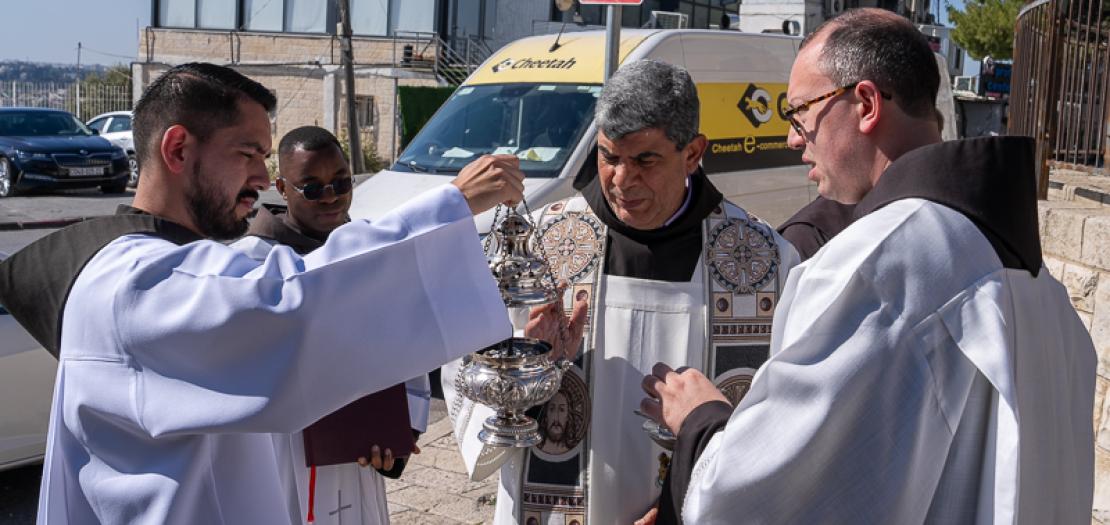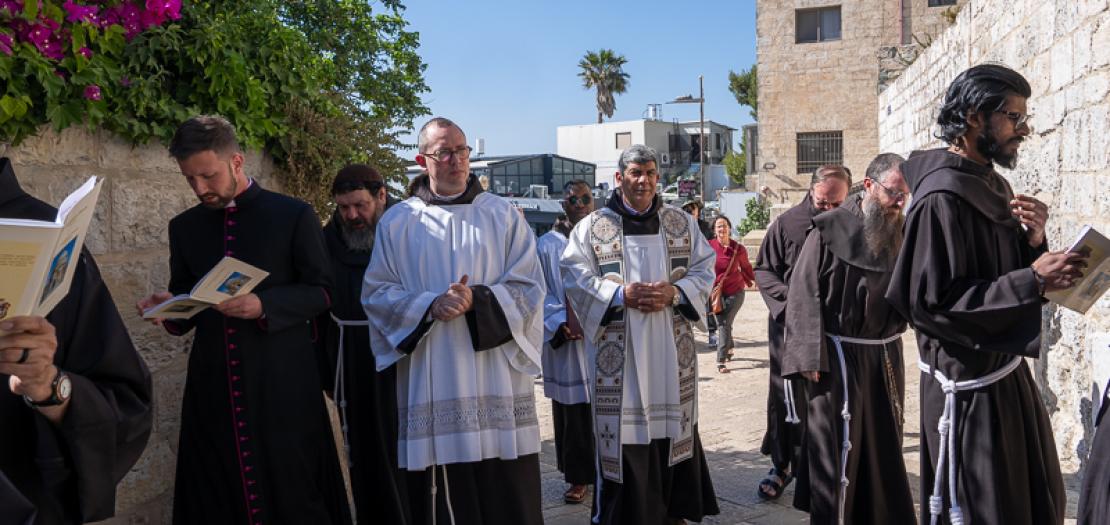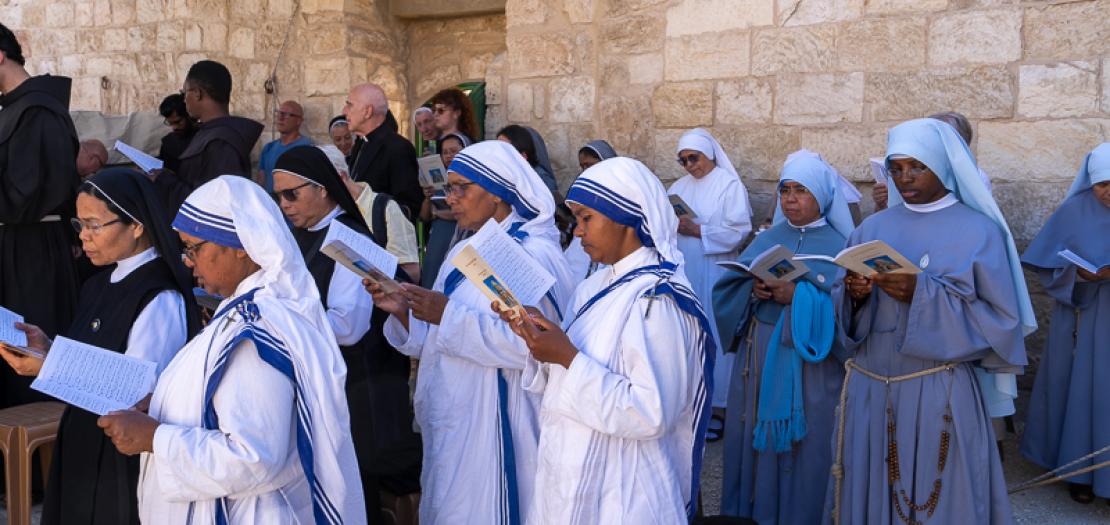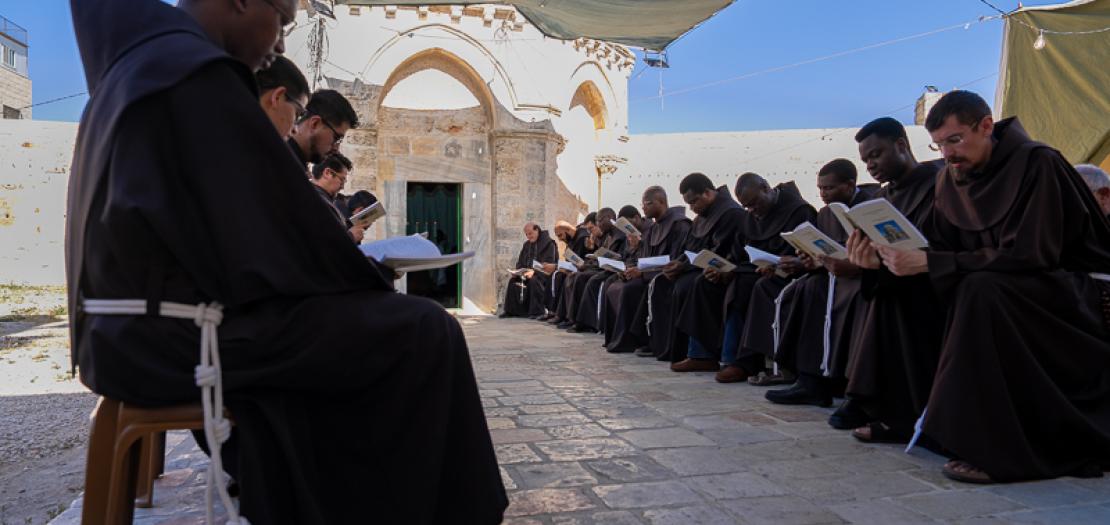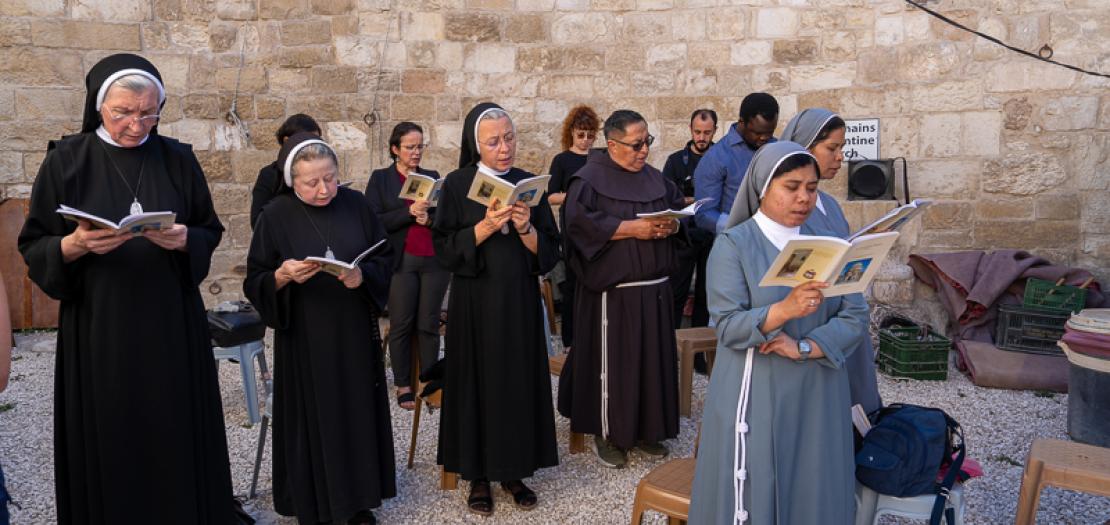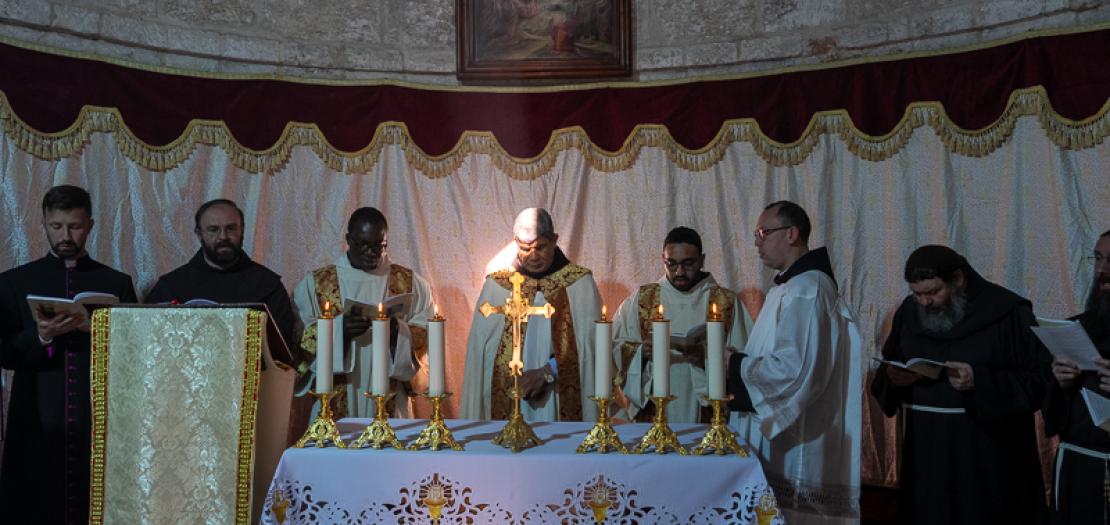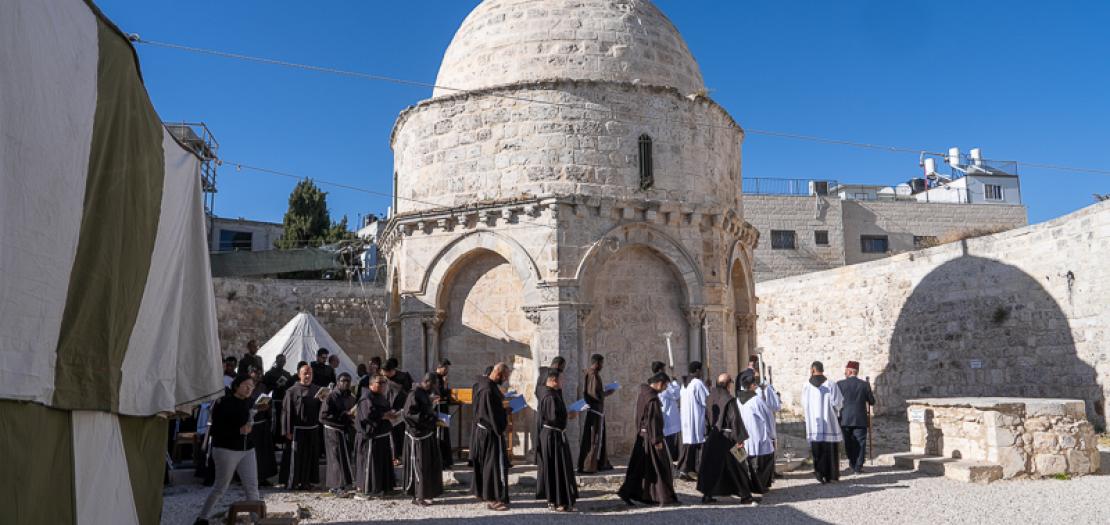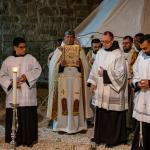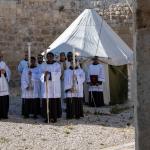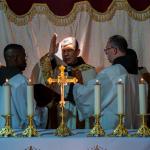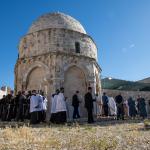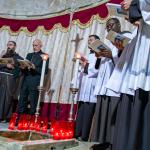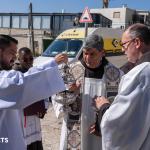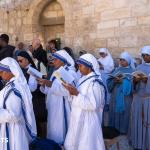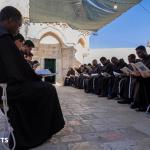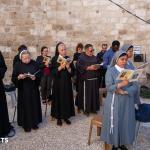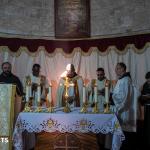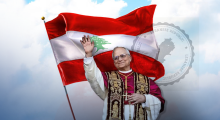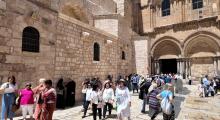Issued by the Catholic Center for Studies and Media - Jordan. Editor-in-chief Fr. Rif'at Bader - موقع أبونا abouna.org
The solemnity presided over by the Vicar Fra Ibrahim Faltas: “The Ascension of Jesus teaches us not to lose hope in these difficult times.”
The celebrations for the great solemnity of the Ascension of Jesus followed on one another from the afternoon of 8 May ion the small chapel where tradition commemorates the place where Jesus rose to heaven.
The event of Ascension concludes the apparitions after Easter of the Risen One: the evangelist Luke situates it as the starting point of the Acts of the Apostles, also considered to be a work by Luke: “When he had said this, as they were looking on, he was lifted up and a cloud took him from their sight.” (Acts 1,9)
The Chapel of the Ascension on the Mount of Olives
In Latin, the place of the event is “Imbomon”: the most probable hypothesis is a derivation from the Greek en bomo, on the risen part (high ground, hill).
After the first shrine which probably dated back to the 4th century had been destroyed, the Crusaders rebuilt the church with a small octagonal-structured chapel (the edicule which can still be seen today), leaving the roof of the church open. From 1198, when the small shrine was purchased by the emissaries of Saladin, the Muslims completed the chapel with a dome. The site has remained the property of the Muslim waqf of Jerusalem and has been transformed into a mosque; however, it is not used for worship.
A frame has been inserted on the rock preserved in the edicule, where tradition recognizes the right footprint of Jesus. For the feast of the Ascension, the Christian Churches have been able to ensure they have the right to come and celebrate on the Mount of Olives, at the end of their respective Easter period, in the respect of the status quo.
The long vigil until the solemn celebration of the Eucharist
The celebrations started in the afternoon of Wednesday 8 May, with the solemn entrance of the Vicar of the Custody of the Holy Land, Fra Ibrahim Faltas, who then presided over Vespers. Afterwards, the Franciscan friars sang in procession the litanies of the saints, going around the Crusader edicule three times. The celebration then continued with the prayer of Complines in the chapel and the night prayer of the Office.
During the night, numerous Masses were held in the chapel on the Mount of Olives until the morning, when the solemn celebration was presided over by the Vicar of the Custody, Fr. Faltas and held in the open in the presence of a large crowd of faithful. “Ascension,” Fra Ibrahim Faltas began in his homily, “exhorts us to look up to heaven, to then look immediately down at the ground. It is here,” the Vicar recalls, “that men have to bring the message of love and mercy of Jesus, despite the weaknesses.”
A new life from wounds
“St Francis,” Fra Ibrahim continued, “makes the Ascension of Jesus enter his life: looking up at heaven, but staying on this ground, glorifying God in all creatures and in the love for his brothers, until he lets the Lord enter his flesh with the stigmata, the eight hundredth anniversary of which falls this year, entitled “A new life from wounds. This makes us reflect more than ever on this period of war which we are living through. I am thinking of the thousands of casualties of this conflict between Hamas and Israel, I am thinking of the wound of hatred and vendetta which has affected the whole population; I am thinking of all the people who have been wounded in their dignity without work; of the Holy Land, injured and isolated by this conflict. We, friars, have also been deeply wounded by this war and it is very hard for us may times to reach the people who live around us, but liturgy and prayer strengthen our communion. We are part of the project of God and Ascension gives us great drive and motivation in the Holy Land, in the places of the Salvation, continuing to sow with fidelity and joy.”
The return of the pilgrims
Despite the difficult situation caused by the conflict underway, the solemnity attracted, as well as the local faithful and many religious, groups of pilgrims who have started coming back to Jerusalem, a sign of great hope for the Christian communities in the Holy Land.
The groups present included the faithful of the Greek Melkite Church of the Annunciation of Nazareth, guided by Father Said Hashem who, like every year, in a tradition that is over a decade old, leads this journey from Galilee to Jerusalem, visiting the most representative places off the Holy City, lingering in prayer during the night vigil and contemplating the mystery of the Ascension on the spot where it happened.


